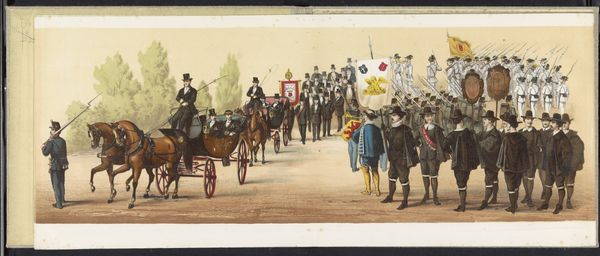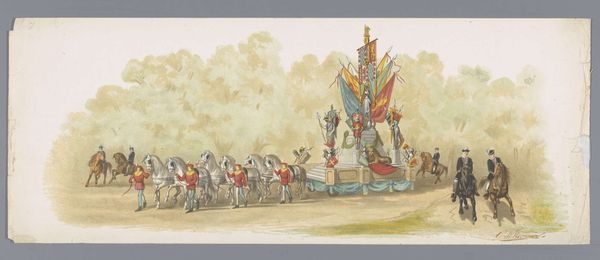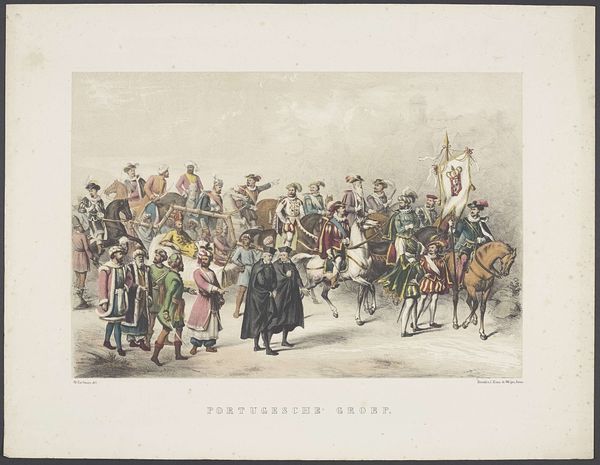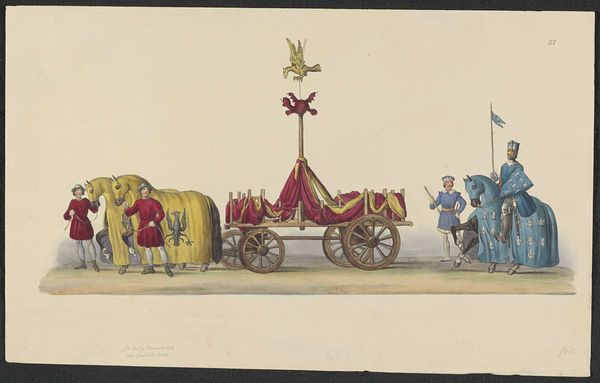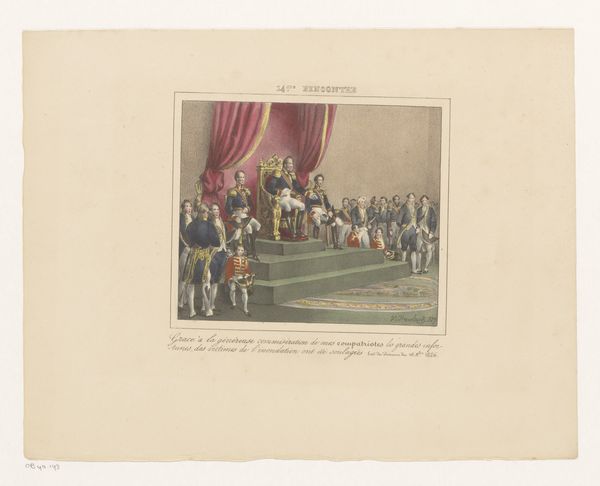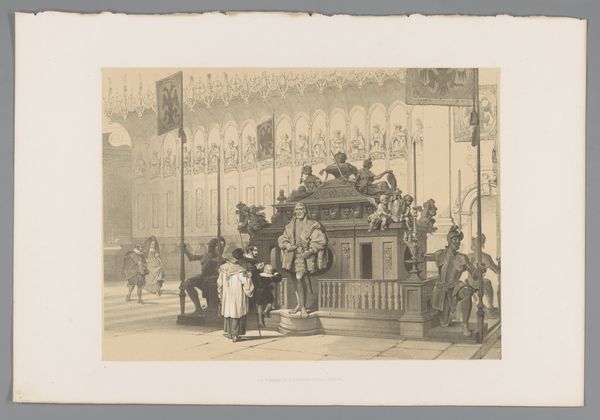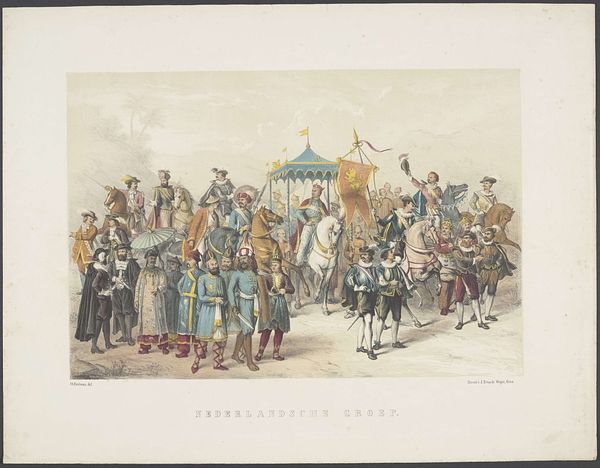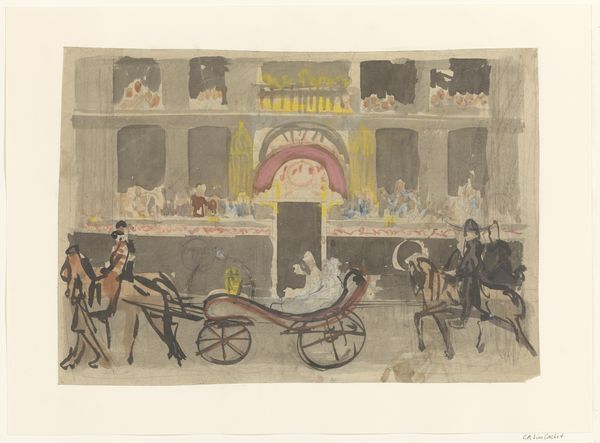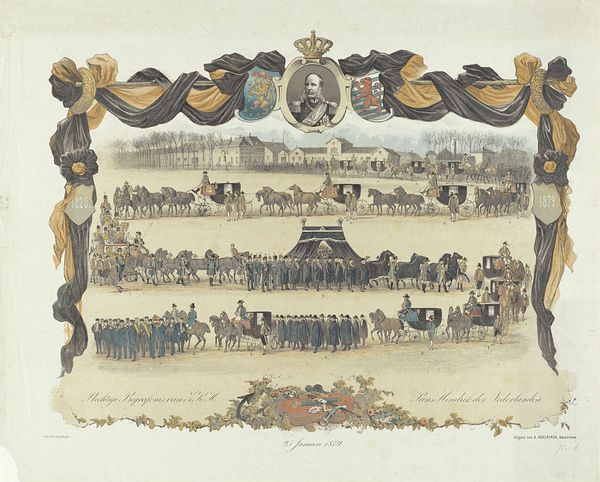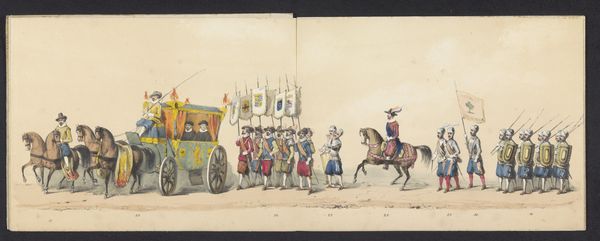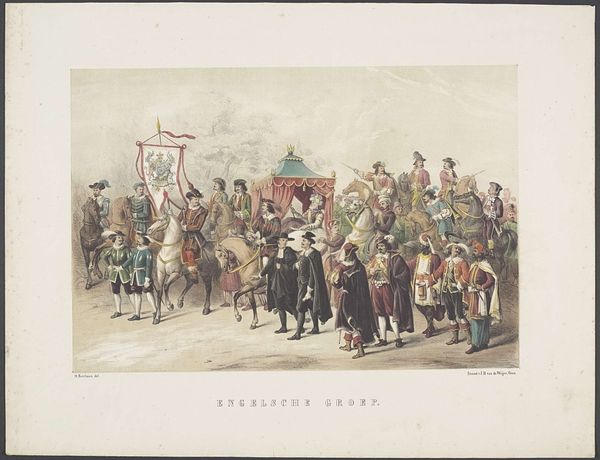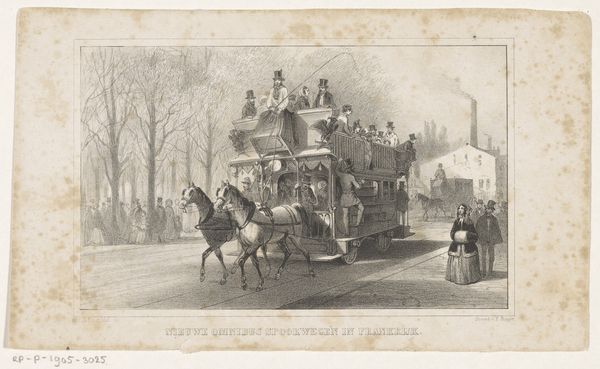
print, watercolor
# print
#
impressionism
#
watercolor
#
naive art
#
cityscape
#
watercolour illustration
#
genre-painting
#
history-painting
#
watercolor
Dimensions: height 280 mm, width 670 mm
Copyright: Rijks Museum: Open Domain
Editor: This print, "Optocht te Haarlem, 1872 (plaat 9)", by Emrik & Binger, appears to be a watercolor print from 1872. It has such a stately feel. It pictures a parade of some sort, but the figures seem rather formal and detached. What do you see in this piece, considering its historical context? Curator: Absolutely. Considering the socio-political landscape of the time, this work feels like a deliberate staging of power and hierarchy. The procession format, the elaborate floats, the costuming—it all speaks to an assertion of national or civic identity. It’s intriguing how “naive art” is one of the AI tags: what societal norms or hierarchies do you think this parade reinforces? Editor: Well, everyone is dressed formally, there seems to be clear distinctions in roles. Does the rigidity maybe speak to a desire for order and control? Curator: Precisely. And we must consider who is absent from this scene. Are marginalized communities represented? Who holds the power in this image? Often, the art of this era, especially genre-painting and historical pieces like this, served to legitimize and naturalize existing power structures, presenting an idealized version of society that excludes dissenting voices. I am also struck by the watercolor medium, so often coded as feminine. Is it possible this choice attempts to soften what is, in essence, a spectacle of power? Editor: That’s a really interesting point. It's almost as if the soft medium downplays the display of authority. Seeing it through that lens makes me wonder what kind of statements we make today with public art. Curator: Exactly! Considering how art continues to be a battleground for representation, this piece reminds us that every artistic choice is a political one, whether consciously or unconsciously. I think both art historical pieces like this one, and contemporary pieces benefit from such scrutiny. Editor: I agree; analyzing these details provides great food for thought!
Comments
No comments
Be the first to comment and join the conversation on the ultimate creative platform.
